Luke Burks
Exact Consistency Tests for Gaussian Mixture Filters using Normalized Deviation Squared Statistics
Dec 29, 2023



Abstract:We consider the problem of evaluating dynamic consistency in discrete time probabilistic filters that approximate stochastic system state densities with Gaussian mixtures. Dynamic consistency means that the estimated probability distributions correctly describe the actual uncertainties. As such, the problem of consistency testing naturally arises in applications with regards to estimator tuning and validation. However, due to the general complexity of the density functions involved, straightforward approaches for consistency testing of mixture-based estimators have remained challenging to define and implement. This paper derives a new exact result for Gaussian mixture consistency testing within the framework of normalized deviation squared (NDS) statistics. It is shown that NDS test statistics for generic multivariate Gaussian mixture models exactly follow mixtures of generalized chi-square distributions, for which efficient computational tools are available. The accuracy and utility of the resulting consistency tests are numerically demonstrated on static and dynamic mixture estimation examples.
Semantic Sensing and Planning for Human-Robot Collaboration in Uncertain Environments
Oct 20, 2021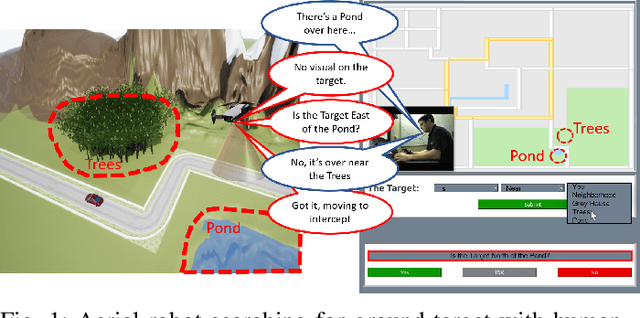
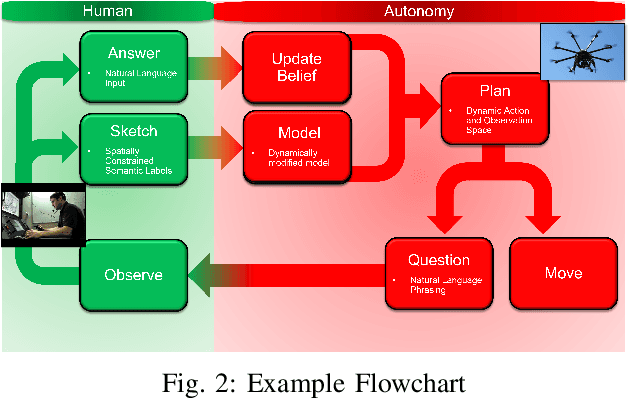
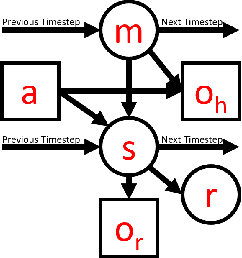
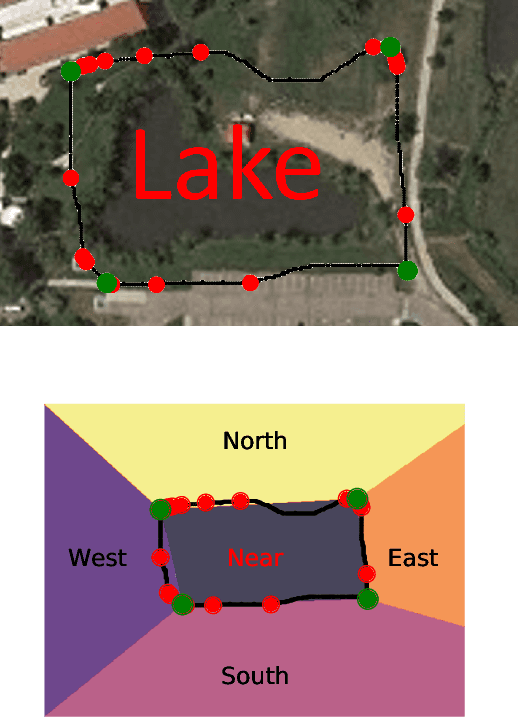
Abstract:Autonomous robots can benefit greatly from human-provided semantic characterizations of uncertain task environments and states. However, the development of integrated strategies which let robots model, communicate, and act on such soft data remains challenging. Here, a framework is presented for active semantic sensing and planning in human-robot teams which addresses these gaps by formally combining the benefits of online sampling-based POMDP policies, multi-modal semantic interaction, and Bayesian data fusion. This approach lets humans opportunistically impose model structure and extend the range of semantic soft data in uncertain environments by sketching and labeling arbitrary landmarks across the environment. Dynamic updating of the environment while searching for a mobile target allows robotic agents to actively query humans for novel and relevant semantic data, thereby improving beliefs of unknown environments and target states for improved online planning. Target search simulations show significant improvements in time and belief state estimates required for interception versus conventional planning based solely on robotic sensing. Human subject studies demonstrate a average doubling in dynamic target capture rate compared to the lone robot case, employing reasoning over a range of user characteristics and interaction modalities. Video of interaction can be found at https://youtu.be/Eh-82ZJ1o4I.
Optimal Continuous State POMDP Planning with Semantic Observations: A Variational Approach
Jul 22, 2018
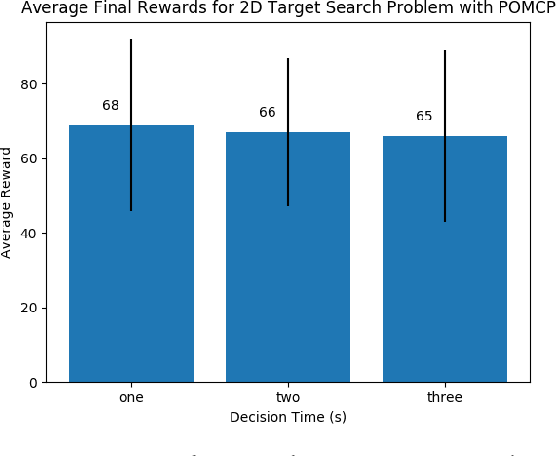
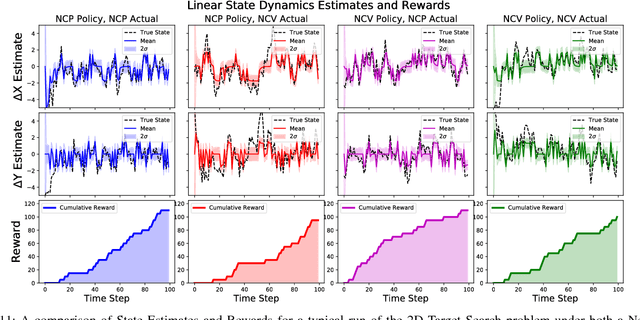
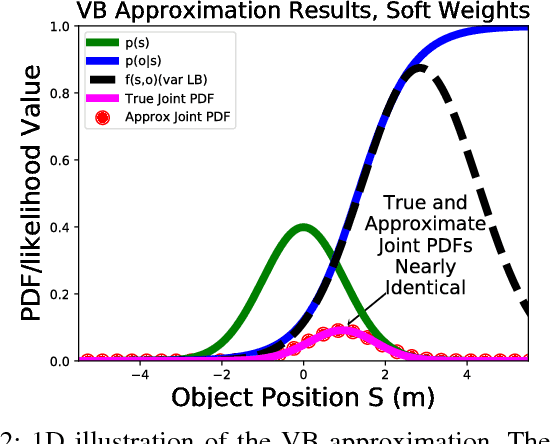
Abstract:This work develops novel strategies for optimal planning with semantic observations using continuous state Partially Observable Markov Decision Processes (CPOMDPs). Two major innovations are presented in relation to Gaussian mixture (GM) CPOMDP policy approximation methods. While existing methods have many theoretically nice properties, they are hampered by the inability to efficiently represent and reason over hybrid continuous-discrete probabilistic models. The first major innovation is the derivation of closed-form variational Bayes GM approximations of Point-Based Value Iteration Bellman policy backups, using softmax models of continuous-discrete semantic observation probabilities. A key benefit of this approach is that dynamic decision-making tasks can be performed with complex non-Gaussian uncertainties, while also exploiting continuous dynamic state space models (thus avoiding cumbersome and costly discretization). The second major innovation is a new clustering-based technique for mixture condensation that scales well to very large GM policy functions and belief functions. Simulation results for a target search and interception task with semantic observations show that the GM policies resulting from these innovations are more effective than those produced by other state of the art GM and Monte Carlo based policy approximations, but require significantly less modeling overhead and runtime cost. Additional results demonstrate the robustness of this approach to model errors.
Closed-loop Bayesian Semantic Data Fusion for Collaborative Human-Autonomy Target Search
Jun 03, 2018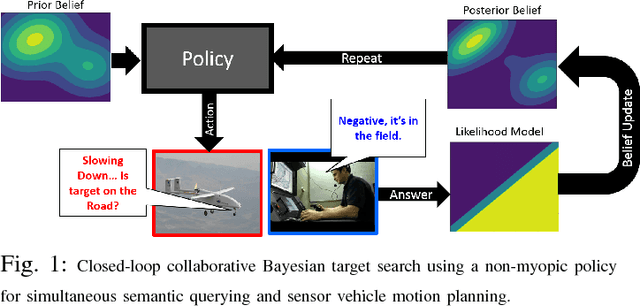
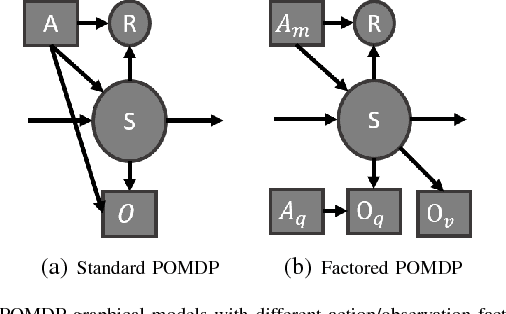
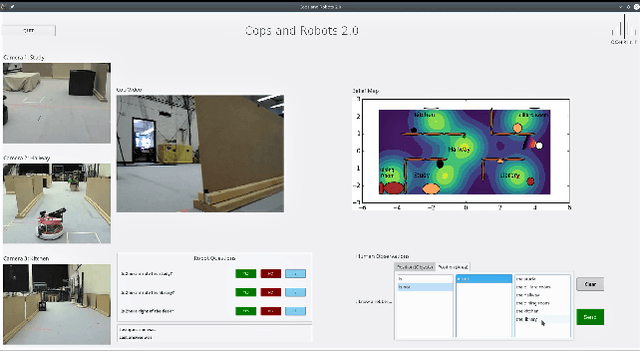
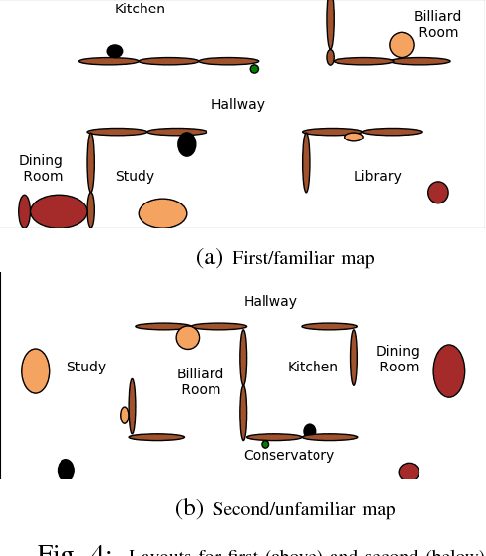
Abstract:In search applications, autonomous unmanned vehicles must be able to efficiently reacquire and localize mobile targets that can remain out of view for long periods of time in large spaces. As such, all available information sources must be actively leveraged -- including imprecise but readily available semantic observations provided by humans. To achieve this, this work develops and validates a novel collaborative human-machine sensing solution for dynamic target search. Our approach uses continuous partially observable Markov decision process (CPOMDP) planning to generate vehicle trajectories that optimally exploit imperfect detection data from onboard sensors, as well as semantic natural language observations that can be specifically requested from human sensors. The key innovation is a scalable hierarchical Gaussian mixture model formulation for efficiently solving CPOMDPs with semantic observations in continuous dynamic state spaces. The approach is demonstrated and validated with a real human-robot team engaged in dynamic indoor target search and capture scenarios on a custom testbed.
 Add to Chrome
Add to Chrome Add to Firefox
Add to Firefox Add to Edge
Add to Edge